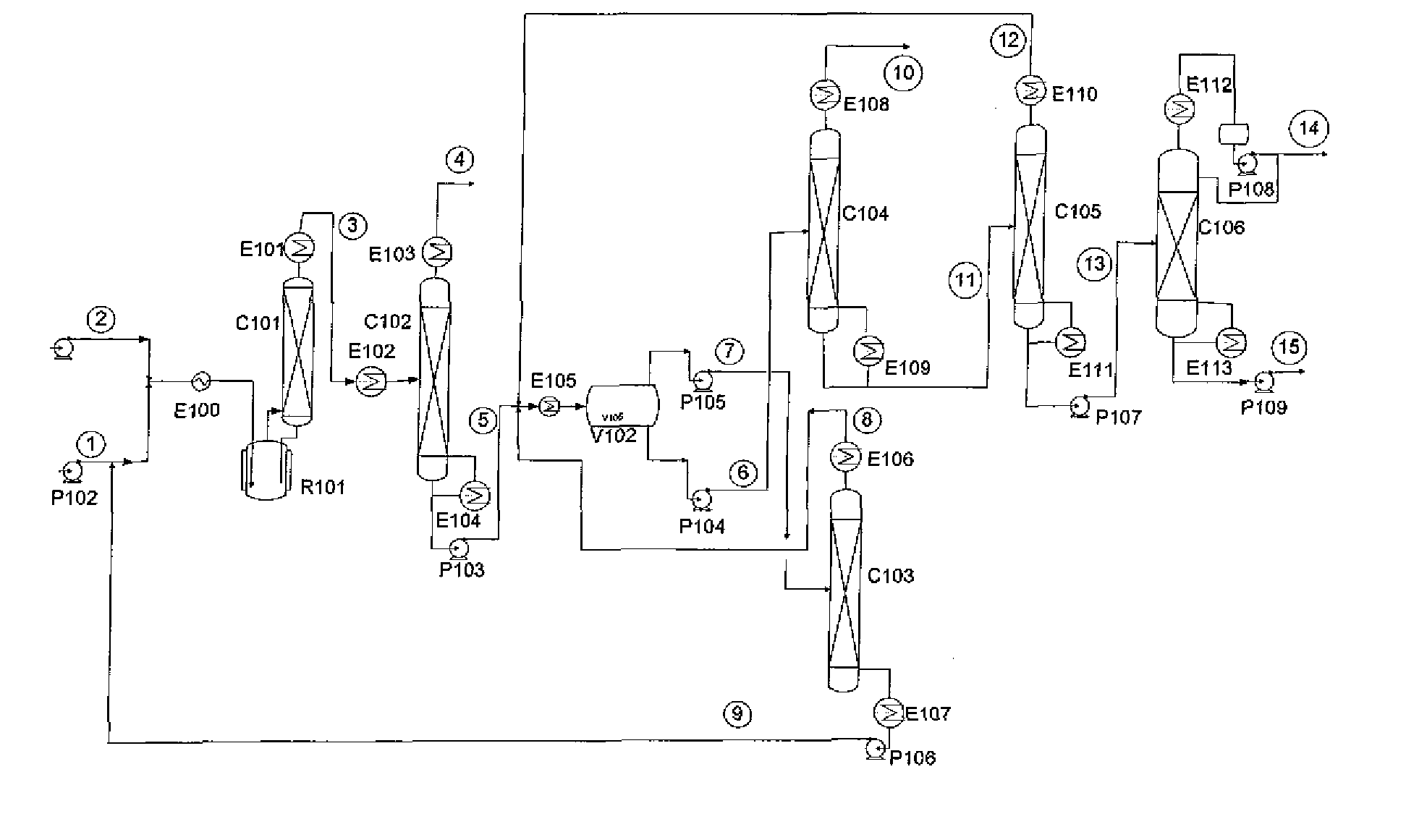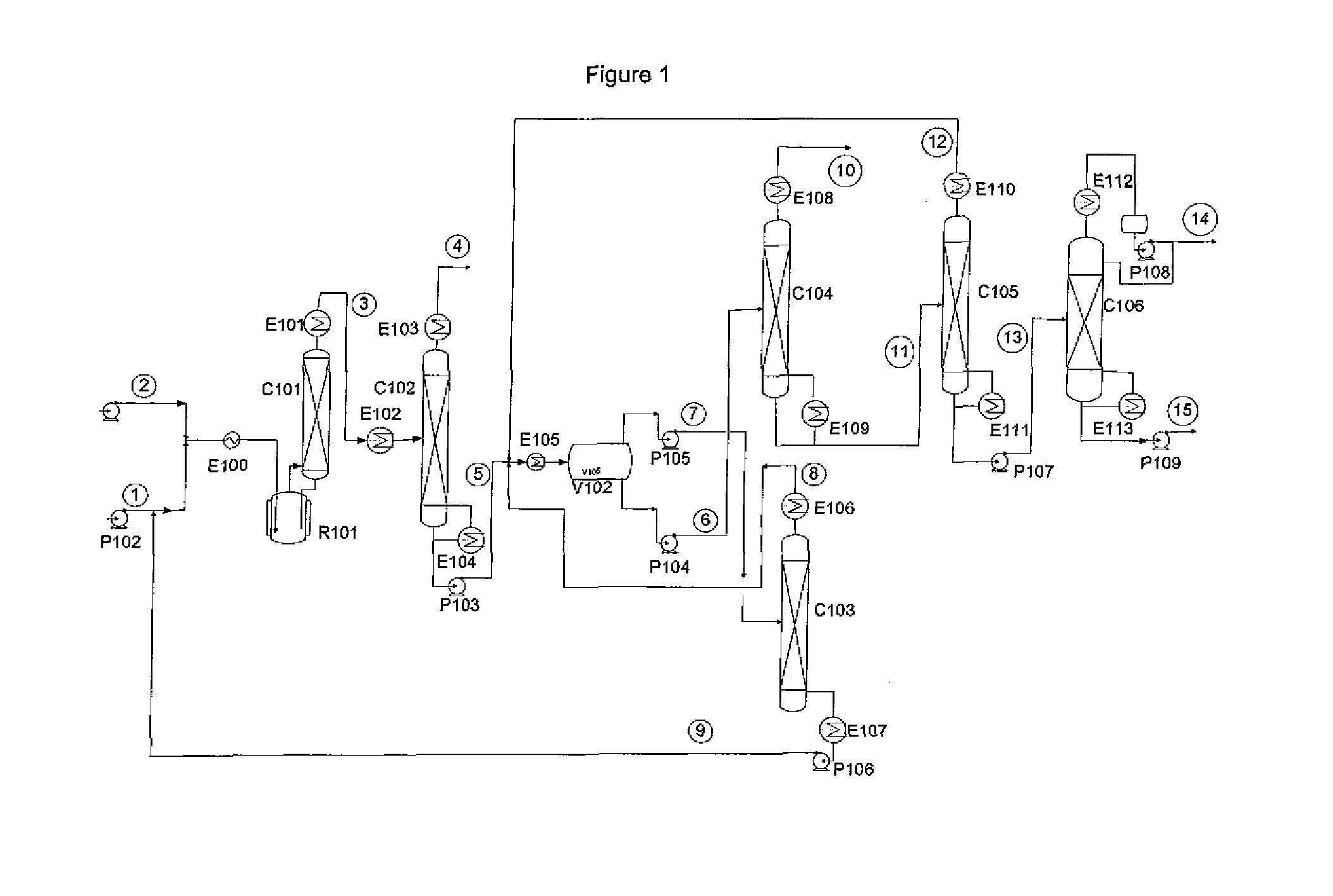Separation of r-1233 from hydrogen fluoride
a technology of hydrogen fluoride and r-1233, which is applied in the field of separation of r1233 from hydrogen fluoride, can solve the problems of short atmospheric lifetime, chemical instability of hfos and hcfos, and achieve the effect of shortening the life of the atmospher
- Summary
- Abstract
- Description
- Claims
- Application Information
AI Technical Summary
Benefits of technology
Problems solved by technology
Method used
Image
Examples
example 1
[0015]A set of experiments were conducted to determine the liquid-liquid equilibrium in an HF-F1233zd system. A mixture of F1233zd and HF were equilibrated at four different temperatures. Samples of bottom and top phases were analyzed. The following results were obtained:
TABLE 1T Upper Layer (wt %)Lower Layer (wt %)(Deg C.)HFF1233zd-tHFF1233zd-t−3075.7224.280.8599.15−1571.1628.841.1898.82 067.8632.141.7298.28 3056.2643.744.1295.88
example 2
[0016]An example of a material balance of the relevant part of the process for a phase separator operated at −20C is shown in Table 2. The stream numbers refer to those used in FIG. 1. As the table shows, the phase separation will produce two phases far enough removed from the azeotropic composition that aeotropic distillation can be used to isolate both pure HF and pure 1233zd.
TABLE 2kg / hr8910111213567HF HF LightsLightsF12333zdF1233zdFeedOrg PhHF PhOvhdBttmsOvhdBtmsOvhdBttms1233zd-t130.45134.9325.3225.320.000.00134.934.48130.451233zd-c13.0513.402.522.520.000.0013.400.3613.05245fa0.000.000.000.000.000.000.000.000.00HF57.201.7968.2911.1057.200.001.791.790.00HCl0.360.360.000.000.000.360.000.000.00Total201.06150.4896.1338.9357.200.36150.116.62143.50Temp (C.)−20−20−204768−28806565Press (psia)40404065661301305088
PUM
| Property | Measurement | Unit |
|---|---|---|
| Fraction | aaaaa | aaaaa |
| Fraction | aaaaa | aaaaa |
| Fraction | aaaaa | aaaaa |
Abstract
Description
Claims
Application Information
 Login to View More
Login to View More - R&D
- Intellectual Property
- Life Sciences
- Materials
- Tech Scout
- Unparalleled Data Quality
- Higher Quality Content
- 60% Fewer Hallucinations
Browse by: Latest US Patents, China's latest patents, Technical Efficacy Thesaurus, Application Domain, Technology Topic, Popular Technical Reports.
© 2025 PatSnap. All rights reserved.Legal|Privacy policy|Modern Slavery Act Transparency Statement|Sitemap|About US| Contact US: help@patsnap.com


